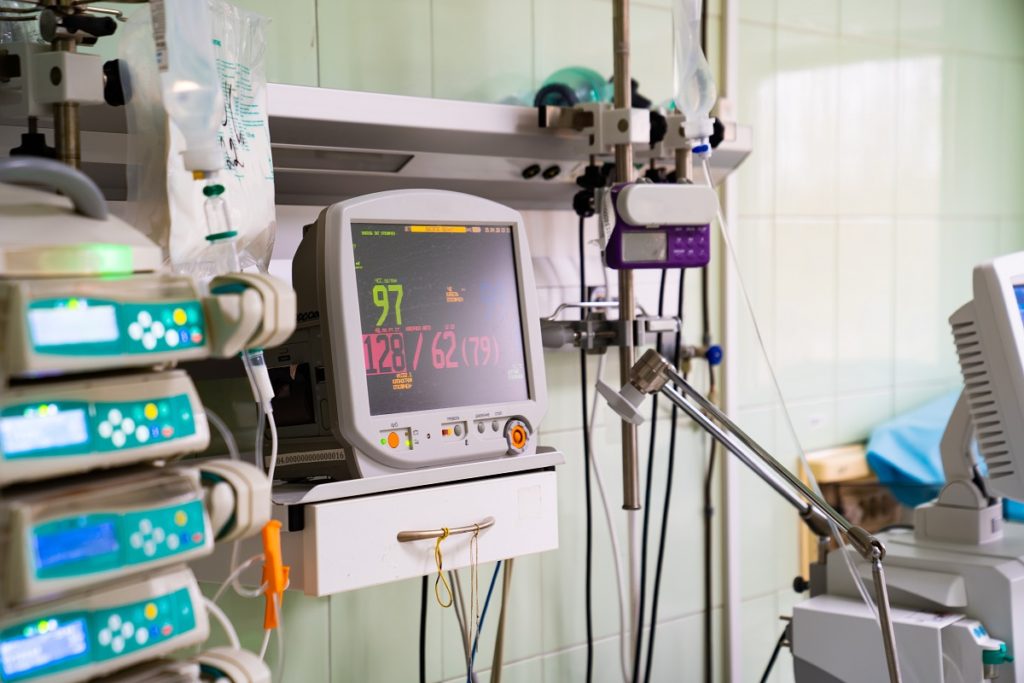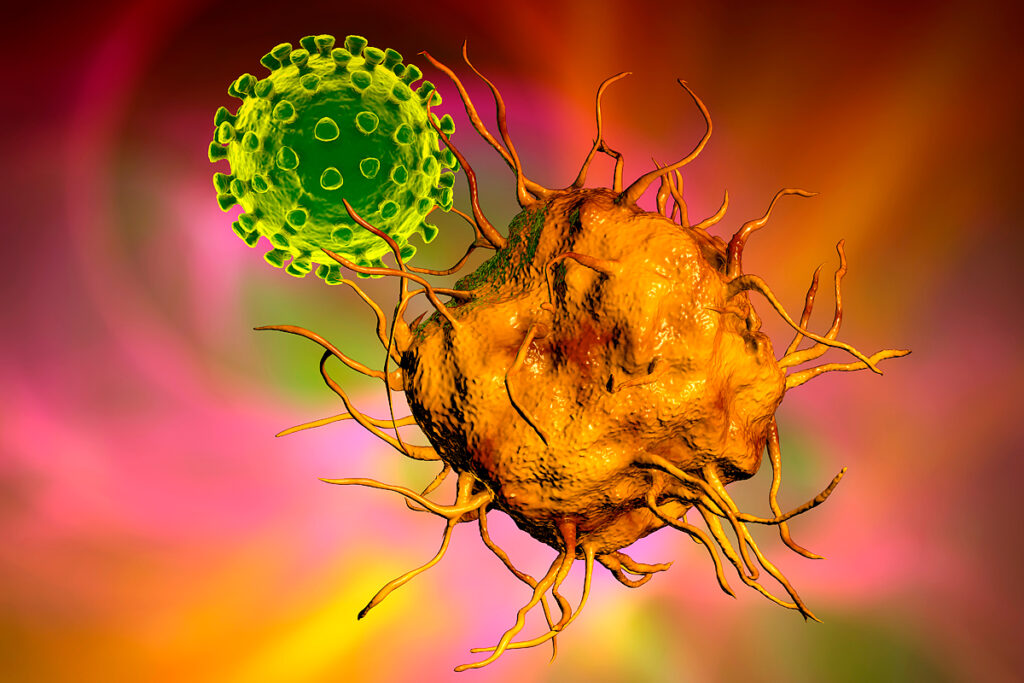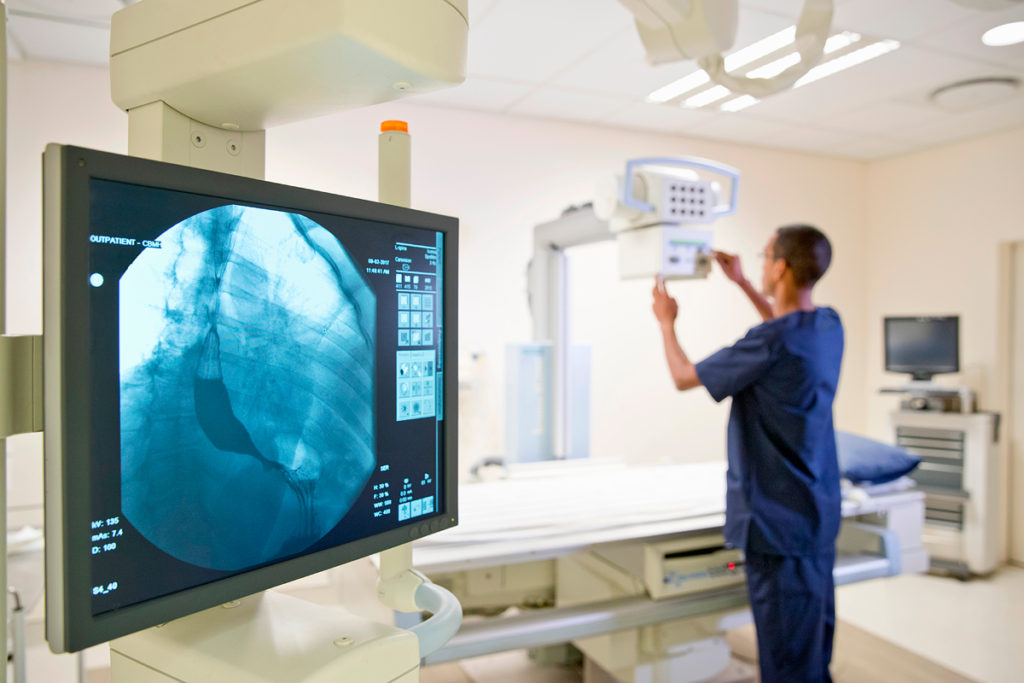Two-phase nature of the disease
In most patients, COVID-19 is mild to moderate in severity. Only 5-10% of patients develop a severe or critical condition. In China, intensive care, artificial ventilation, and death occurred in 6.1% of cases. The death rate in France is 0.70%. High rates of respiratory failure are registred in people under 50 years of age with concomitant diseases: diabetes, hypertension, and overweight. The percentage of critical cases for COVID-19 is higher than for seasonal flu.
According to clinical observations, the disease most often develops in two stages. The first is mild or moderate severity.
In the second stage, there is a sharp increase in the blood proteins of the acute phase of inflammation. That is part of the systemic response to infection. There is secondary respiratory deterioration, lymphocytopenia, turbidity in the lungs during computed tomography (CT), high prothrombin time, and d-dimer levels. The second stage usually begins 9 to 12 days after the first symptoms of the disease appear.
This two-phase development of the disease is a manifestation of an imbalance between pro – and anti-inflammatory proteins. As a result, white blood cells accumulate in the lungs, causing acute respiratory distress syndrome (ARDS).
However, the immunological features of severe conditions in COVID-19 are still poorly understood. Scientists from the University of Paris and the Pasteur Institute have researched in this area.
Testing the hypothesis of viral hyperinflation
The researchers used a combined approach to test the hypothesis of virus-induced hyperinflation in severe conditions associated with COVID-19. Based on clinical and biological data, they performed a phenotypic analysis of immune cells, whole blood transcription analysis, and measured cytokine concentrations.
The study involved 68 people. With mild or moderate severity of the disease – 15 people. Patients in serious condition – 17 people. In critical – 18. Group of healthy people-18 people.
To study the dependence of lymphocytopenia on the disease severity, populations of T cells, NK cells, activation, and depletion markers were compared.
In patients with severe and critical conditions, the density of CD3+ T cells, including all their subsets, was reduced. The most pronounced decrease appears in CD8+ T cells. Also, in this group of patients, the density of NK cells was reduced.
All infected patients had an increased t-cell activation marker CD38+ HLA-DR+. As the severity of the disease increased, the expression of PD-1 (a marker of t-cell depletion) is also rising. A similar relationship is observing for NK cells.
Thus, the lymphocytopenia of patients in severe and critical conditions is partially associated with t-cell apoptosis.
Type I interferon activity in patients of different severity
Interferons of type I (IFN-1) are the basis of antiviral immunity. They activate several types of genes. The products of these genes fight the virus at different stages: cell interference, replication, and exiting the cell.
To study the immunological transcription signatures that characterize the severity of the disease, scientists conducted a quantitative assessment of the expression of the corresponding genes in peripheral white blood cells.
In patients with mild to moderate severity, the genes encoding proteins associated with IFN-1 and IFN-2 were more active.
In severely ill patients, it was the opposite. We have observed high expression of genes encoding inflammatory and innate immune responses. The activation of interferon-stimulated genes (ISG) is reducing. Moreover, in patients in critical condition, the suppression of ISG regulation was the strongest.
Interferon-beta (IFN-β) is not detecting in the blood plasma of all infected patients. Furthermore, the level of interferon alpha-2 (IFN-α2) was lower in patients in critical condition compared to patients in light and medium conditions. Serum interferon (IFN) activity was also significantly lower in patients in critical condition.
Cytopathic analysis in vitro showed that a low IFN-1 response preceded the development of respiratory failure and ARDS in 95% of cases. In patients whose plasma ISG and IFN-α2 were low requires artificial ventilation.
The results of a series of analyses made at different periods of the patient’s illness revealed a clear dependence of IFN-α production on the severity of the disease. Patients with mild to moderate severity had stable high levels of IFN-α. High but short level of IFN-α – in severe patients. Critical ones have a low level or lack of IFN-α.
The primary source of IFN-α in the body is plasmacytoid dendritic cells. Their number in infected patients, regardless of the severity of the disease, was lower than in healthy people. This effect may be related to the migration of these cells to the sites of infection.
When whole blood cells are stimulating with interferon-alpha, a comparable increase in the ISG index is observing in infected and healthy people. We can assume that the response potential to IFN-1 was not affected in patients with COVID-19.
Inflammatory cascade in impaired IFN-1 production
Severe cases of COVID-19 are associated with increased cytokine production — hypercytokinemia. With increasing severity of the disease, genes associated with cytokines and chemokines were more often activated.
We notice that in whole blood, the levels of RNA cytokines are not always correlating with the levels of protein in plasma.
The critical inflammatory factor interleukin-6 (IL-6) is not detecting in peripheral blood at the transcription level. However, high levels of the active form of the IL-6 protein have appeared. Increased expression of IL-6 induced genes: IL6R, SOCS3, STAT3. The IL-6 signal path is activated.
Another key inflammatory factor: Tumour necrosis factor-alpha (TNF-α) is moderately activating at the transcription level. However, circulating TNF-α is significantly increased.
The differences between the quantitative levels of RNA and the levels of the protein itself may be related to the synthesis of TNF-α and IL-6 by damaged lung and endothelial cells.
The reverse pattern was observed with IL-1. While levels of IL1B transcripts are elevating, the active form of the IL-1 protein is getting low. Also, circulating IL-1α was not detected.
For other cytokines, the picture is also diverse. IL-10 transcripts and IL-10 protein were detected in patients with severe and critical conditions. IL-17A was not detected in all infected patients.
The study of transcription factors that control hyper inflammation revealed a dependence of the disease severity. Patients in severe and critical conditions had significantly increased levels of the necrosis and cell damage marker and associated protein kinase receptor (RIPK-3).
Hyperinflammation is associated with a massive influx of innate immune cells that can worsen lung damage. Analysis of the chemokine receptors revealed that THE cxcr2 receptor significantly elevates in patients in severe and critical conditions. Furthermore, the CXCL2 receptor was without differences between the groups. Monocyte chemotoxic factor CCL2 also rises in infected patients.
Conclusions and directions
This study found a weak IFN-1 response in patients with severe and critical conditions, high concentration of viruses in the blood, and an excessive inflammatory response. SARS-CoV-2 has shown the ability to suppress interferon production.
A distinctive feature of heavy COVID-19 is a deficit of IFN-1. No circulating IFN-β was detected in infected patients. Moreover, the most severe cases are associated with impaired IFN-α production.
It will be essential to study the dynamics of IFN-1 in infected people. To improve the prognosis in complex cases, it is necessary to evaluate the level of IFN-1 production at the beginning of the disease. Is there a delay in IFN-1 production? Is IFN-1 production exhausted after the initial peak?
However, it is necessary to carefully test the possibility of filling the deficit of IFN-1 with injections. Anti-inflammatory therapy with IL-6 and TNF-α antagonists also requires additional research.
This study is based on a blood test. Perhaps the immune response in the lungs will differ.



